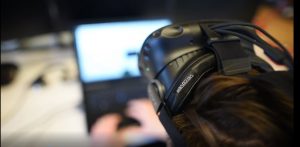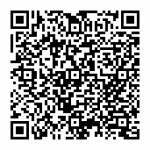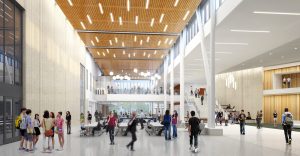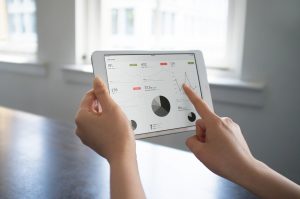Innovation
OPN Architects x Iowa State University CCL
Virtual Reality
 Virtual reality is a tool used by architects and engineers to visualize the design in three dimensions. If a picture is worth 1,000 words, a 3-D model is worth 1,000 pictures. This rapidly evolving technology has taken designers from the architectural sketches of a generation ago to three-dimensional immersive building models. The ability to visualize designs in a three-dimensional form from every angle inside and out is a powerful tool that shapes decisions and helps solve potential issues before they become real (and potentially costly) during construction.
Virtual reality is a tool used by architects and engineers to visualize the design in three dimensions. If a picture is worth 1,000 words, a 3-D model is worth 1,000 pictures. This rapidly evolving technology has taken designers from the architectural sketches of a generation ago to three-dimensional immersive building models. The ability to visualize designs in a three-dimensional form from every angle inside and out is a powerful tool that shapes decisions and helps solve potential issues before they become real (and potentially costly) during construction.
This technology can also be a powerful fundraising and community engagement tool. Video screens inside headsets will allow you to step into your completed project before a brick has been laid. We will leverage this technology to build momentum. Building committee members will know what the architect means by “grand entrance” and have confidence in their decisions. With VR, potential donors will easily understand the project and see how it will impact the city, thereby increasing the chance of their participation in its vision. They will be able to walk through the project and clearly understand its scope. At public meetings, a quick scan of a QR code on a smartphone and VR headset will allow the VR experience to be shared with the entire community.
Scan the QR code to take a virtual tour.
- Open your camera app and hover over the
QR code or snap a picture. - A pop up will appear prompting you to open a
link in your browser. - Click the link and you are in!
- Use your touch screen to explore!
Explore: Ames High School


Ames High School Commons
Data-Driven Design
 Many intuitive decisions are made during the design process, but it is important we track data and utilize this in our decision-making process too. OPN has a research specialist on staff to monitor and track space utilization, and other relevant figures, etc., to provide real-world benchmarking and data-driven insights to inform our design decisions. We recognize the need for balance among all aspects of operations and management, staffing, technology, community building, public support, facilities, and the rapidly changing global environment. Our process includes strategies for understanding design philosophies, prioritizing decisions, and allocating resources to those efforts most likely to yield the maximum design value.
Many intuitive decisions are made during the design process, but it is important we track data and utilize this in our decision-making process too. OPN has a research specialist on staff to monitor and track space utilization, and other relevant figures, etc., to provide real-world benchmarking and data-driven insights to inform our design decisions. We recognize the need for balance among all aspects of operations and management, staffing, technology, community building, public support, facilities, and the rapidly changing global environment. Our process includes strategies for understanding design philosophies, prioritizing decisions, and allocating resources to those efforts most likely to yield the maximum design value.
“We saw our clients asking why in a lot of different ways.. so we value data and collect it for our clients.”
– Principal, Wesley Reynolds

